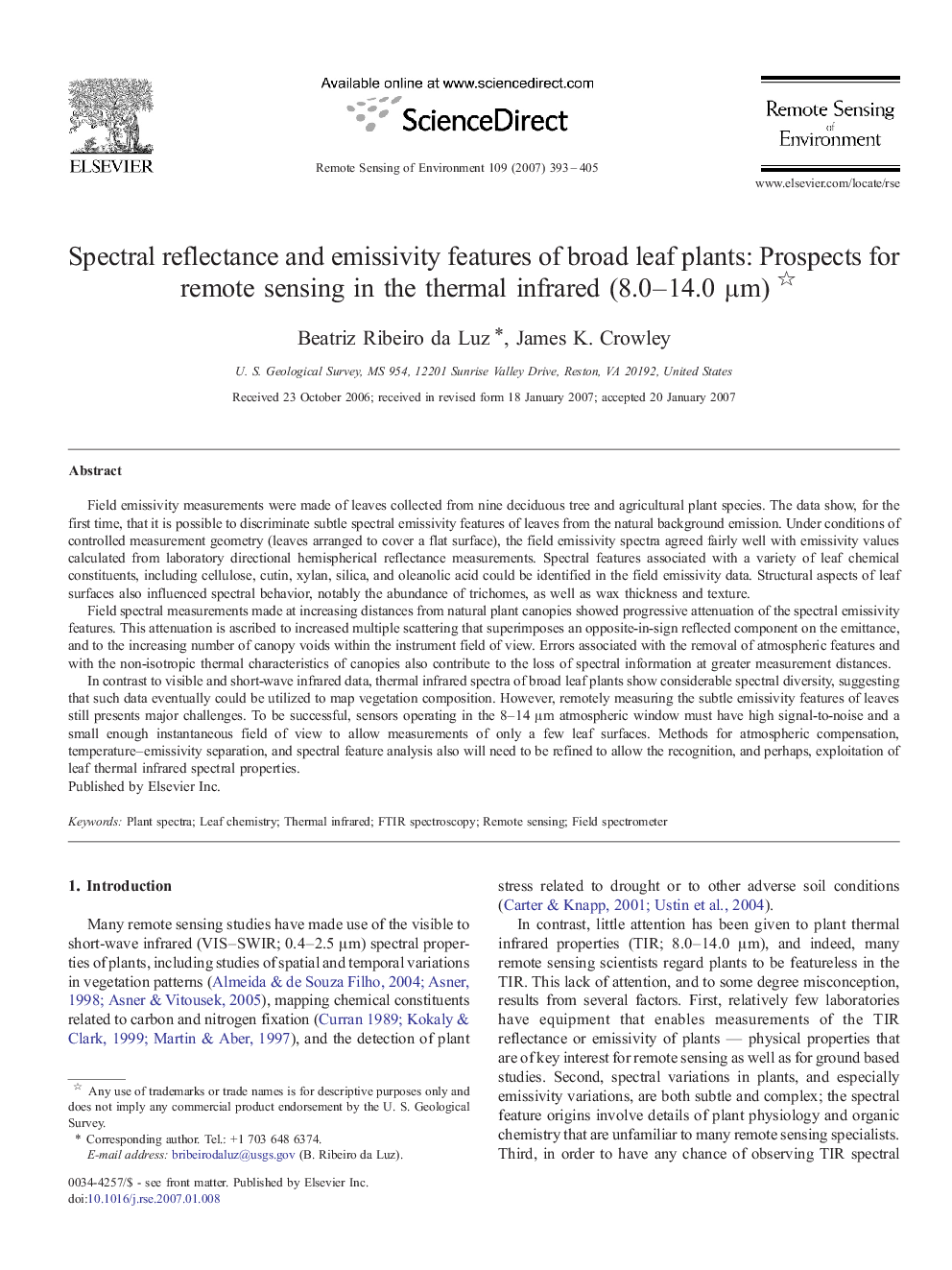| Article ID | Journal | Published Year | Pages | File Type |
|---|---|---|---|---|
| 4460872 | Remote Sensing of Environment | 2007 | 13 Pages |
Field emissivity measurements were made of leaves collected from nine deciduous tree and agricultural plant species. The data show, for the first time, that it is possible to discriminate subtle spectral emissivity features of leaves from the natural background emission. Under conditions of controlled measurement geometry (leaves arranged to cover a flat surface), the field emissivity spectra agreed fairly well with emissivity values calculated from laboratory directional hemispherical reflectance measurements. Spectral features associated with a variety of leaf chemical constituents, including cellulose, cutin, xylan, silica, and oleanolic acid could be identified in the field emissivity data. Structural aspects of leaf surfaces also influenced spectral behavior, notably the abundance of trichomes, as well as wax thickness and texture.Field spectral measurements made at increasing distances from natural plant canopies showed progressive attenuation of the spectral emissivity features. This attenuation is ascribed to increased multiple scattering that superimposes an opposite-in-sign reflected component on the emittance, and to the increasing number of canopy voids within the instrument field of view. Errors associated with the removal of atmospheric features and with the non-isotropic thermal characteristics of canopies also contribute to the loss of spectral information at greater measurement distances.In contrast to visible and short-wave infrared data, thermal infrared spectra of broad leaf plants show considerable spectral diversity, suggesting that such data eventually could be utilized to map vegetation composition. However, remotely measuring the subtle emissivity features of leaves still presents major challenges. To be successful, sensors operating in the 8–14 μm atmospheric window must have high signal-to-noise and a small enough instantaneous field of view to allow measurements of only a few leaf surfaces. Methods for atmospheric compensation, temperature–emissivity separation, and spectral feature analysis also will need to be refined to allow the recognition, and perhaps, exploitation of leaf thermal infrared spectral properties.
